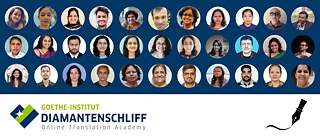Translators
Over the course of the comprehensive programme, the participating translators - our "diamonds in the rough" as per the project title - worked on selected texts and took part in various workshops to expand and refine their professional skills. Intensive dialogue with each other and with the mentors was an important element of the academy.
In the "Translator's Note" section (under the respective profiles), the participants share their views on how they benefited from the academy's programme as well as which aspects they followed and incorporated in their translations.
Bangla
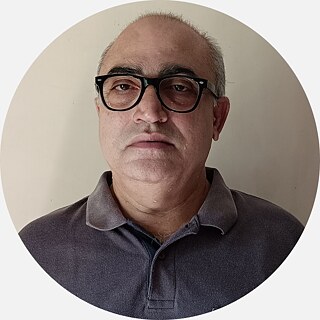

Amrita Dhara currently teaches freelance and designs and conducts training seminars and language-and-culture workshops at the Goethe-Institut in Mumbai. She also translates journalistic and literary texts from German into English and Bangla. As part of the 2021 project "Contemporary German-language Drama in South Asian languages" she co-translated two plays of Roland Schimmelpfennig into Bangla.
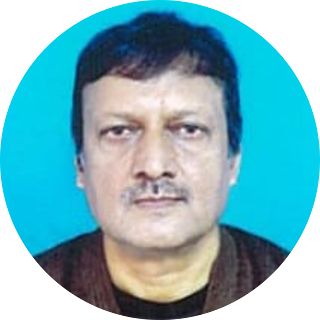
Translators Note:
The project took me through several stages of a change in my perception as regards the entire approach to being a successful translator. Here I would like to summarise the main insights that I got through the process.
Firstly, in order to be a successful translator of a text, it does not suffice to simply have a good grasp of the source language; it is equally important to have a similarly good grasp, if not mastery, of the target language into which the translation is being done.
The second aspect which was impressed upon me by the mentors of my language group (Bangla) was that a translation may often be misplaced if the translator works purely on the face value of a text, without knowing the background of the creator of the original text, at the time when the text was composed. Without a basic background knowledge of the circumstances in which an author or poet renders his/her composition, without a knowledge of the environment in which he/she was placed at the time of composition, the feelings which he/she seeks to convey in the phrases may be lost on the reader by an all too literal translation of the text.
The third aspect is the dilemma a translator faces, particularly while translating poetry: How much liberty can one take in deviating from the original structure of a verse in order to maintain the resonance of the verse, while ensuring it does not become a cut and dried piece of conversion of text from one language to the other? Simultaneously, one must be careful that the translated text does not become so removed from the original that it remains no longer a translation but rather a new creation of the translator - in the latter’s having usurped the original creation of the poet!
All these aspects were addressed from different perspectives by the distinguished personalities who conducted the workshops and lecture sessions as well as our mentors - in the context of the ambit of a translator’s work, of the limitations of translation in conveying the true in-depth nuances of the original text as also of the pitfalls a translator needs to avoid.
I also felt deeply humbled by the references made to the responsibility of translators acting as ambassadors, as the bridge in the expanding and sharing of literary works beyond the limits of geographical borders of countries. Successful, worthwhile translations could often be a means of promoting amity between people of different countries, providing access to the thoughts of people of different cultures across the world, unfettered by geographical boundaries. This was not an aspect which had occurred to me before I attended these DTA sessions. And the manifestation of this could be self-evident not only across different countries but also within this country of ours, with its rich and varied multi-lingual fraternities.
Translation is not simply an exercise of conversion of a text from one language to the other. Rather, it is a linguistic performative act as it transforms the written or spoken text from the cultural framework of one language to that of another. Among other factors like the literary-cultural traditions and political contextsthe translator must - during the process of translation - also naturally engage with the multiplicity of “voice(s)” that the text speaks in.
The principal challenge I faced as a novice translator of prose and verses as directed by our group mentors during our sessions was one of a balancing act: between the urge to assign to myself a free hand at undertaking the translation while retaining the flavour and the overt as well as covert nuances of the original text. That said, it was always a fine tussle between according a secondary place to one’s own perceptions vis-à-vis that which I could conceive as the writer/poet’s perceptions in the original text. This, I believe, is the dilemma faced by even experienced translators, whereby one’s own perspective with respect to the content of a literary piece may be in conflict with another translator’s perspective on the same text. But this perhaps is also what makes the field of translation such an exciting avenue to explore - something which perennially remains a learning experience for even the most experienced and hard-baked translators.
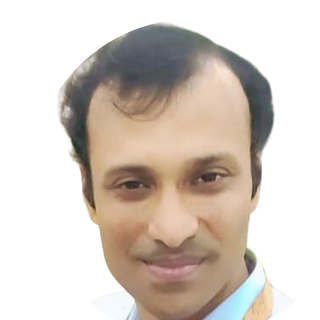
Translators Note:
A journey of limitless learning, continuous encounters with intriguing ideas and a fair chunk of challenges making it all the more exciting and worthwhile. These would be my first impressions looking back at the past few months, an unforgettable experience of travelling as Mitfahrer with the German Digital Translation Academy, Diamantenschliff.
Translation, Übersetzung or অনুবাদ (ōnubād) in my native language Bangla, is something that has always fascinated me. Literary translation is something that entails the transferring of ideas from one language to another, from one culture to another. Literary works are cargoes of the human mind ferried from one linguistic shore to another by the ship of translation.
It was out of this fascination that I applied as a participant for the language group Bangla at the online translation academy organised by the Goethe-Institut Mumbai. Post-selection, it has been a continuous voyage of learning, enrichment and fulfilment.
I consider as a particular boon our two mentors whose unquestionable grasp of the subject matter - translation in general and translation into Bangla in particular - has been exceptional. Their consistent, sincere guidance has been the best form of immediate support one could have expected or had. The wonderful discussion sessions that we started having right from the beginning, known to those in our group fondly as our fortnightly adda, culminated in the two superlative workshops conducted on prose and poetry in late September-early October 2023. From translation theories to an array of best-practice-examples, detailed feedback on our practical exercises in translating a diverse selection of German verse and prose texts - these sessions were exceptionally rich in necessary inputs and insights. Useful and enjoyable to the core, it is here that our doubts were addressed and questions answered, specifically with regard to the scope, opportunities and challenges of translating into our own native language.The active participation and engagement of my colleagues of the Bangla language group, their questions and remarks often acted as a mirror to my own mind.
I am equally grateful for the two translation workshops on prose and poetry conducted for all language groups during which some remarkable ideas were shared. During her workshop on prose, Ms. Tess Lewis described translation as “the art of losing, the art of the impossible, and a problematic necessity”. Subsequently she also touched upon the ‘untranslatables’ before delving into how one can live with and deal with such matters. Of particular interest to me was her invoking Walter Benjamin to drive home the difference between Erlebnis and Erfahrung, the former being ‘lived experience’ while the latter was a ‘lesson learned in life’. It was underscored by her that the entire tradition of Western philosophy, including cultural and translation philosophies, lay behind this concept. The highlight of Ulrike Draesner’s workshop on poetic translations was for me perhaps her question-answer pair:
„Kann man Gedichte überhaupt übersetzen?” - „Nein, aber eben doch!”
“Can poems be translated at all?” - “No, but they must be, nonetheless!”
An in-depth analysis of the impressions of poetry, strategies to adopt for translating and some concluding personal tips were the central features of her workshop that stayed with me.
Apart from the workshops and discussion sessions, there were useful inputs to take home from the monthly lectures delivered by senior professors, professional translators and experts in the domain. This left us better equipped to deal with the highly nuanced aspects of the art and science of translation.
As a culmination of the pebbles picked up on the way I wish to conclude my note with a thought. Successful literature is, quite often, the art of shocking others; the written word is seen as something that brings about a change in the reader. However, while authors cause shock and surprise through their own ideas, the translator does precisely that with the ideas of others. This, in all likelihood, is even more challenging and daunting. It requires a sound and thorough reading of the mind of the original creator, the author, and subsequently the measured ability to express that understanding in words and phrases intelligible to users of the target language with suitable modifications (as well as judicious avoidance thereof) - with the final goal of causing shock, surprise and interest.
It will always take the heart of an optimist to achieve this proverbial Herculean task. Equally enough, it will also take the mind of a strategist: cool, calculating, discerning and free from bias.
Diamantenschliff was a programme that made me advance in this regard by a considerable step. Like all good things, it must come to an end. Nonetheless, if a thing has enriched you, you will keep wanting for more. Hence, the final feeling will always be: Man ist ja noch nicht satt! The cup is still not full!
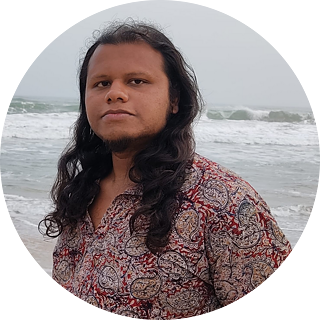
Translators Note:
All of Kafka’s novels, Der Prozeß or The Trial in particular, have had a peculiar relationship with me as a reader. I say ‘a’ relationship, whereas, it has actually been an evolving chain of relationships. One might argue that this is the same with all works of arts, since our perception of them, and of the world at large, changes over time. In this case, however, apart from the factor of time, there has been another more significant element responsible for the development of my understanding of Kafka. I speak here of the element that constitutes every literary work, namely language.
I first came across the three novels of Kafka in my early twenties. Like other people of my age who had an inclination towards reading, I had reached out for this Czech-born writer writing in German mostly from an adolescent but not entirely pretentious want of camaraderie with someone who had also gone through (what one describes at that age as) the ‘pangs of existence’. That was a time for looking for affirmation from literary works, an attempt verging on desperation to seek some resonance with a foreign voice that could corroborate my teenage anguish. I am not sure now how much Kafka actually lived up to the task, since the issues that inhabit his world of literature do not exactly mirror the ones from which my reading of him began. My reading of Kafka at this stage was in English (the Muir translations), and the complexity of sentence structures, clauses and the breathlessness of the narrative together with its absolute lack of romanticism and metaphorical expressivity did not make for a very pleasant read. But in certain circles one ‘had’ to say that one has read Kafka and has ‘related’ to him. Having been not a member of such circles, I at least was saved from making this claim.
My next tryst with Kafka was in my mid-and-late twenties as a university student of Comparative Literature. By then I had acquired some proficiency of the German language to be able to access some, if not all, portions of the text. Unlike the previous phase where I had ‘gone’ to Kafka in search of affirmation, now Kafka ‘came’ to me as a text in the syllabus. The reading this time involved a higher degree of criticality, or in other words, an anxiety to find, map, trace, compare and analyse meanings. But although the academic framework demanded a certain reification of the work, my reading of Kafka was now further‘opened up’; I could see my surroundings, the misuse of power, the confusion and dynamics of hierarchy, and the obstinacy of ego through the lens of Kafka. My reading in this phase alternated between English and German. And even in this phase, expectations were not met, or rather, met differently. Conventional academic straitjacketing was bent on framing Kafka as absurdist and surreal, whereas I vocally revolted in one of the lectures at the university, arguing for the ambivalent role of ‘logic’, both as theme and narrative aesthetic, and of Cartesian reality in the world of Kafka.
My third, and till now, last engagement with Kafka has been as a translator. And it is a phase where the text oscillates for me between three languages, German, English and Bangla, English being a ground that has been resorted to while hovering between the other two languages. A reason why this note describing the experience of translating a German text into Bangla is also written in English. I cannot help but recall the three phases of engagement with a text highlighted by Sujit Mukherjee in his book Translation as Discovery, i.e. reading for one’s own purpose as hermetic or closed reading, reading for the purpose of exegesis or hermeneutic reading, and translating a text or discovery. Although I would maintain that each of these phases has involved discoveries of different kinds, translating Kafka has actually led me to produce in a gesture of repetition (and not re-production) the different speech intentions (Redeabsichten) in the excerpt chosen for this work. I was no longer uncovering what the text intends, but sought to perform that out in Bangla. The long clausal constructions peppered with ‘und’ has been a challenging element in the text to be transformed into Bangla, where I have tried to retain the breathlessness of the harangues and the argumentations, without which their eventual ‘meaninglessness’ cannot be transmitted to the target reader. At places where Kafka’s K. uses the German informal pronoun ‘du’ as a form of address in the courtroom, I have used the Bangla pronoun ‘tui’ - a semantically flexible form hovering between informality, intimacy and disrespect - in order to accentuate the mood of the scene. Such are the discoveries that have accompanied me in this journey with Kafka so far.
I look forward to meeting Kafka again, maybe this time, in some other role, some other transaction.
Hindi

Translators Note:
Doing a literary translation is never easy. So many nuances, which make a literary text rich, can easily get lost or can get misinterpreted in this milieu of multiculturalism. So it was both a challenge and a pleasure to translate an excerpt from Franz Kafka’s “Das Schloss”.
This text was particularly interesting, in that I could instantly relate to it in a universal sense: that is, a tightly knit group of people, forming a sub-culture and distinctive identity of their own under the aegis of the “castle”, outwardly open, but with hidden undercurrents that keep a stranger out. This human tendency of associating and identifying oneself with a sub-group within a wider sea of people, is not restricted to a particular region or culture. Hence, I took the bold decision to leave out the German-specific contextualization and set it in a broader environment by Indianising the names and situations. This was also the reason that I translated the title as “Qilabandi” (locked in a fortress) instead of simply “Qila” (fort, fortress), because the “Schloss” here is not merely a castle, but a fortress where no outsider can live or stay overnight “ohne gräfliche Erlaubnis” (without permission of the Count). It is fortified, or as it is called in Hindi, a “band” fort. Hence the name “Qilabandi”.
The first step towards translating this excerpt was to read the entire text a multiple number of times to get an understanding of the meaning, the structural rhythm and the flow of conversation in the text. Later, I looked up all the difficult words in the dictionary and tried to get equivalences of expressions in Hindi.
Although it was difficult to choose Indian names for the characters, I decided to take the semantic route,, except for maybe the name “Firoz” in place of “Fritz”. This search for names itself was a journey of discovery for me, as I had to delve deep into both the German and Indian psyche, and in the process, I learnt, or rather rediscovered, some more things about my own customs and traditions. For example, the name “West” can be commonly encountered in the European and American regions. However, here in India, aa common trend is to name a child after one of the nearly 330 million aspects of the gods of the Hindu pantheon. The names are considered to be blessings or the virtuous and identifying characteristics associated with a particular god. For example, most of the Indians treat the sun as a major god. Hence, it is common to name a person as “Uday”, meaning “sunrise”, but never as “sunset”. Similarly, there are other names conforming to the direction in which the sun rises, that is east, for example, “Poorab” or “Prachi”. That is why it was a challenging task for me to find a suitable name that corresponded semantically to Graf Westwest, the owner of the castle. Changing the name from “Westwest” to “Pradoshpradosh” was a bold step I took, “Pradosh” being the time when the sun sets in the west. Although the direction “west” itself is a connotation of the dark side of life connected with sunset, “pradosh” can be turned into a time when a person tries to get absolved of his sins through prayers and fasting. Therefore, the name “Pradosh” does exist in the Indian book of names. The double use of the name I have deliberately sought to stress through a confirmatory question by the newcomer.
Likewise, the name “Schwarzer”, which literally means “the dark one”, has been replaced by the name “Shyam”, meaning “dark”.
The other challenge was the naming of the protagonist “K”. Kafka himself has not been more specific about the name and has used only an initial. That is the reason why I felt that this person could be anyone, except for the fact that he is an outsider. Therefore, I have just kept him anonymous and used the personal pronoun “woh” (he / she). So as not to confuse the reader regarding which “woh” we are talking about in different parts of the text, I have also used variations for the nameless protagonist, like “agantuk” (visitor), “musafir” (traveller) etc.
Yet another difficult aspect was the use of the connector “und” (and) to construct long sentences in German. I have let go of “und” in some places, so that the flow of language in Hindi is smoother, but I have tried to keep the complex structures as they are. That is, I have tried not to break down the sentences into smaller ones, as is the norm in Hindi, and kept the full stops in more or less the same places, unless absolutely necessary.
Indian cultural references like “Kundali kholna” (opening the ‘coil’ or the horoscope) have been used to connote exposing all personal details of the traveller, “angeethi” (fireplace, stove) instead of “Ofen” (oven), “desi madira” (country liquor) in place of “Bier” (beer). I avoided a region-specific term like “tadi”, “mahua” or “pheni” to avoid localising the story to a specific Indian region. The renowned Indian actor Shah Rukh Khan has been referred to while describing the film star-like looks of the young Schwarzer.
Additionally, this exercise in translation has put me in touch with my own roots, with my mother tongue, my parents’ dialects and idiomatic usages and my own mixed Hindi-Urdu upbringing, while simultaneously thinking back to the expressions that would have been used in my native village in the context of the setting of this text. It has also prompted me to pick up my habit of reading Hindi texts again, which I had lost during my university days.
I am extremely thankful to all my mentors and the co-participants, who have been my guide and support with a vast exchange-bank of ideas throughout this enriching academy. And, of course, also to the Goethe-Institut for this wonderful opportunity.
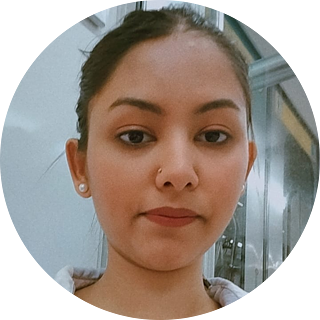
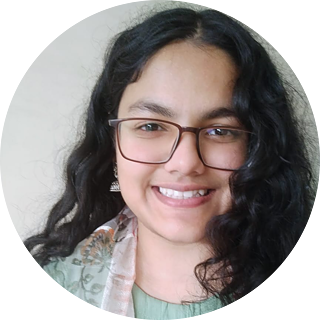
Translators Note:
Translating Kafka is nothing short of an honour. If you are someone like (the old) me, who has a very rigid definition of what a story is and how it is written, the kind of characters, a protagonist, a problem, a solution, perhaps a villain and a happy ending or a moral, then reading Kafka would be (firstly) a shocking and (then) a view-expanding experience. Most of the stories revolve around the crude issues of the world, the bitter truths, recited in the most unfiltered ways. Anonymity, which is displayed through the nameless characters, also brings the reader to a more personal identification with the character. The two stories that I have translated “Zerstreutes Hinausschaun”(Absent-Minded Window-Gazing) and “Der plötzliche Spaziergang” (The Sudden Walk) are also based on the same technique of narration.
“Zerstreutes Hinausschaun” is a simple description with huge symbolism, of what a person sees when they look out of their window. This is also the reasoning behind my naming it as “झरोखे के उस पार” (Beyond the Window). Since naming it something syntactically similar to its original German title was not possible because of the grammatical structure of Hindi, I found this to be the most appropriate title for this miniature prose piece. Carrying the simplicity of this text into Hindi was the style that I wanted to achieve, and to that end I have kept the sentences short and easy to follow. Apart from that, the main character of the story is unnamed, and the focus, in my view, is on the little girl outside the window. I have tried to retain these aspects in my translation.
The second narrative “Der plötzliche Spaziergang” - I read up on several interpretations of it, in addition to developing my own - is about a person who is undergoing some family issues, and ‘suddenly’ gets up and goes for a walk, leaving the other family members surprised. Here, too, is the undefined and anonymous main character a big challenge to the translator: In terms of the indefinite German pronoun “man”. In Hindi I had several options to choose from: आप (you, formally), कोई (someone, one), व्यक्ति (a person), मनुष्य (man, a human being), इंसान (man, human being), हम (we), वो (he/she), or using no corresponding expression at all. I had planned to use only one expression throughout to achieve that consistency of the “man” in the German text. However, due to the difference in the grammatical structure of the two languages, it was not possible. After having finished one draft trying to use no corresponding expression at all, I found the text to be very difficult to read, and some sentence structures similarly “untranslatable”. So as to not compromise on the flow of the text, I used ‘कोई’(someone, one) in one instance.
Another characteristic that differs in both the languages was the amount of load a sentence can carry. The German language is known to be able to carry bulky sentences and subordinate clauses very easily, whereas when it comes to Hindi, we seldom find such instances. However, I felt that writing the whole first paragraph in only one sentence and the other paragraph being just one short sentence, was a very important stylistic feature of this story, and hence, I wanted to realise this structure in my translation as well. As a result, the text does sound a little different from the stories one would typically find in Hindi literature, but that, I think, also enhances the beauty of it, and adds a new structure to Hindi literature.
Summing up, all I would like to say is that I had a fun time bridging the two cultures and languages, and I hope the readers too have an enjoyable experience walking that bridge.
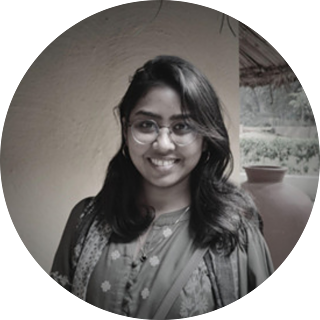
Translators Note:
“Die Verwandlung” (Metamorphosis) was the first translated book that I read about four years ago. Kafka was certainly not an unknown name for me back then, but what was unknown to me was the question: “What is Kafka?” With the help of our mentors, we were shown a path to start our journey of translating Kafka’s literary works. I spent a week reading about Kafka and his works. It was imperative for me to connect myself with the text and the author and understand the connection between the text and the author. I tried to understand his words through his perspective and his experiences, since the story consists of existential themes and lots of extreme emotions like anger, fear and alienation, which is always tricky to translate. Also, I noticed that the reader is often left with the task of interpreting the text, which can make it a challenging read.
While I was going through the book again, before beginning with the translation, I observed in the text a kind of humour mixed with pity, tragedy and socio-cultural norms with a dash of a sense of alienation and failure; or I would simply refer to it as grotesque humour, for example, in expressions like “ganz krepiert” (totally dead), “spiele den Beleidigten” (play the offended). As I continued to engage with the text, I initially marked the words and sentences where I struggled to understand them and worked on those. While translating, I made several decisions pertaining to the target language. For example, starting the sentences with Gregor instead of just using a pronoun (he). Indeed, Kafka has written his sentences here quite straightforwardly. However, like a typical German work, the sentences are long and consist of many clauses. While translating in Hindi, I broke those long sentences packed with clauses to make them more accessible to the reader.
Although there were no major typical 20th-century references in the text, I had no intention of assimilating the text into the target language’s culture. I consider it essential to connect the target language readers with Kafka and hence, I decided not to tilt the text culturally towards the target audience. I chose the the word कायांतरण (Kayantaran, lit. changing the body) as the title for this story, as I believe this word is an acceptable equivalent of “Die Verwandlung” (metamorphosis) and represents the particular text as well. This word has already been used as the title of an existing Hindi translation of the work.
I thoroughly enjoyed the process of translation and, most importantly, I learned a lot along the way. It allowed me to implement the skills I had gathered from my past translation experiences. I had to make several conscious and subconscious decisions during the process, as my perspective towards the text changed several times. I used to think Gregor was the only one I thought who went through the process of “Metamorphosis”, but it was each and every character in this text, who experienced or went through a change.
My sincere thanks to the Diamantenschliff project for giving me this ideal opportunity.
Kannada
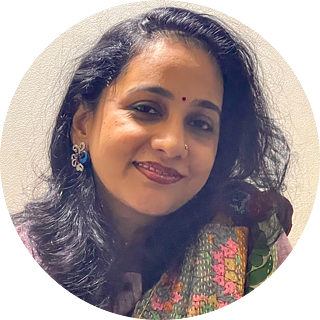

Translators Note:
Kafka was always an enigma for me — one whom everyone seemed to talk about in various conversations on topics of literature. They always had different views and opinions about his works and I had never read Kafka, let alone translate his texts. But when I did read Kafka, I was glad I did so in the original German. Having spent most of my adult life in science and research, it was an uphill task, and yet an exciting one to decode his works and the world of existentialism. It was so, despite having read literature in Kannada and English from an early age, and in German over the past few years. Translating Kafka was the perfect new opportunity I was looking for in building my skills as a translator.
I chose to translate a section of Das Urteil (The Judgement) into Kannada. The conversation between the character Georg Bendemann and his father is the focal point of the selected excerpt. Georg enters his father’s dimly-lit bedroom to inform him about a letter he wrote to a friend in St. Petersburg. During their conversation it becomes clear that the father is a dominant figure in Georg’s life. Even though the father talks incoherently at the outset, Georg does not dare to talk back but instead tries to evade the situation by changing the subject of the conversation to his father’s unhealthy habits. In the subsequent conversation, the father, albeit physically weak, manages to literally bring Georg down to his knees.
Das Urteil is the most autobiographical of Kafka’s stories. A literal translation seemed like a straightforward approach at first. But, like all Kafka texts, multiple interpretations come out of every reading, and to encapsulate most, if not all, of them in the translation requires weighing several choices of words and phrases against one another. This opinion was also shared by my DTA colleagues who translated the same text into other languages.
The age-old translators’ dilemma of whether to stay true to the original text or make it accessible to the readers of the target language became harder to crack. Most of the decisions I made while translating the text can be put into one of two categories: (a) working within the confines of Kannada to ensure that not just the text but also its emotion carries through; and (b) discovering the joys of many new possibilities for expression that Kannada offered as a language.
On the first issue, i.e. working to retain the meaning and emotions of the original text:
The contextual usage of the second person singular pronouns Sie and du in German differs from its Kannada counterparts ನೀವು (neevu) and ನೀನು (neenu) in one major way. In German, both speakers use either Sie in a formal setting or Du in an informal setting to address each other. However, in Kannada, neevu is used by a person who is “lower” in the social hierarchy — either in age, social status or any other — to address someone “higher up”, while only the person “higher up” may say neenu to the person “below”. In addition, Kannada allows for a contextual distinction in the third person: the masculine ಅವನು (avanu) for someone “lower”, and the gender-neutral ಅವರು (avaru) for someone “higher up”. Keeping in line with the autobiographical nature of the story, I decided to use neevu when Georg directly addresses his father (even though he uses Du in German), and avaru when the author is referring to the father. And similarly, neenu when the father addresses Georg, and avanu when the author refers to Georg. Another example is how Kafka uses the possessive articles sein (his) or mein (my) in some places in front of the word Vater (father), and the masculine definite article der (the) in other places. As per my reading, the possessive articles highlight the connection between the father and son, and the definite article keeps the father at a distance from Georg, and at the same time gives the impression that Georg (and Kafka by extension) looks up to him like some sort of a divine figure.
On the second issue, translating into Kannada opened up the possibility of using ideophones to denote motion — such as ಪಟಪಟ (paṭapaṭa) flattering of his father’s coat against his body or the way Georg ತಟಕ್ (taṭak) suddenly kneels down in front of his father — and provides a unique way to evoke ideas with sounds.
As with any translation, these micro decisions added to the richness of the source text, and has enabled me to read and to savour the reading more intensely. Not just Kafka or German literature, but also literature in my own mother tongue Kannada. And as part of the Diamantenschliff Online Translation Akademy organised by the Goethe Institut Mumbai, I got an opportunity to delve into this new and exciting world of literature, for which I am very grateful.

Translators Note:
Being a part of "Diamantenschliff: Digital Translation Academy" has been a privilege for me. I have learnt a lot about the nuances and processes that go into the translation of a literary work. The various seminars conducted by esteemed authors and translators were extremely useful in my personal journey as a translator. Having so far only dabbled in the occasional technical and legal translation, this academy provided me the opportunity to hone my skills in the field of literary translation. Going forward I hope to put this knowledge gained over these last few months effectively into practice. My sincere thanks go out to the organisers and to my mentor.
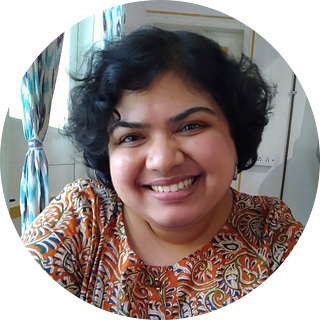
Malayalam

Translators Note:
Malayalam, a rich language that is expressive in its own way, presents both opportunities and challenges in capturing the essence of Kafka, demanding cultural and linguistic adaptation while striving to preserve the subtleties of his narratives. This translation is an attempt to convey the integrity of Kafka's themes in a way that resonates with Malayalam-speaking readers.
When the Diamentenschliff Digital Translation Academy proposed that the translators put together a selection of Kafka’s writings, my choice of the short prose pieces Der Nachhauseweg (The Way Home) and Der Fahrgast (On The Tram / The Passenger) was not easy but rather deliberate. Both are uniquely representative of Kafka's signature exploration of existential themes and the human condition. Narrated in the first person, both are known for their meticulous and detailed description of characters and surroundings. In Der Fahrgast, the narrator grapples with uncertainty and a sense of detachment, even though he perceives the world around him with utmost clarity. Der Nachhauseweg delves into the aftermath of a thunderstorm, offering reflections on responsibility, the past versus the future, and eventual alienation, all characteristic of Kafka's complex and introspective style. With its layers of interpretation, surreal details and subtle shifts in tone, translating Kafka's prose into Malayalam was both a challenging and a rewarding endeavor.
The participation in the Diamentenschliff translation academy has profoundly influenced my approach to translation. Insights gained during the workshops, coupled with constructive discussions, rigorous scrutiny and the sharing of the mentor's and each translator's approach to working with a text significantly contributed to refining individual translations and developing a more effective and inclusive methodology. The regular lectures and interactive sessions organised by the team facilitated an extensive learning process, served as a platform for open discussions, addressing queries, clarifying doubts and receiving feedback, enabling a collective examination of translation as an art and a method. These experiences combined have made the final Kafka translation project less challenging and more gratifying. I hope these translations are a testament to the process born out of the collective wisdom of the academy.
I extend my gratitude to the organisers of the academy, to my mentors and fellow participants for such an enriching experience.

Translators Note:
As part of the Diamantenschliff translation academy I had selected for translation into Malayalam four short prose pieces of Kafka, namely “Der plötzliche Spaziergang” (The Sudden Walk), “Wunsch, Indianer zu werden” (The Wish to be a Red Indian), “Die Bäume” (The Trees) and “Zerstreutes Hinausschaun” (Absent-Minded Window-Gazing).
In "Der plötzliche Spaziergang" the protagonist contemplates withdrawing from everyday life and going out for a sudden walk late in the evening. After dinner and before bedtime he follows his train of thoughts which leads him to suddenly decide to leave the house. Thereafter the true figure of the central character is revealed, and finally the idea of visiting a friend comes to him. The text demonstrates the features of the expressionist literary epoch. The entire story is narrated in the German indefinite pronoun "man" (one, someone), which can be translated into English also as “one”, “someone” or even “you”. For my translation I also chose the pronoun “you”, as it conveys the sense better in Malayalam. Kafka*s narrative style in this piece is reader-centred and it demands a personal interpretation of the plot while reading. Syntactically, the striking feature of this piece is that it consists of only two sentences. The first sentence runs up to practically the end of the narration and is constructed hypotactically, which is characteristic for Kafka. It begins with an "wenn” (if) and is followed by eight further conditional half-sentences beginning once more with “wenn” (if). This leads to an ever-increasing and detailed string of feelings. Also stylistic for Kafka is the hyphen in the middle of a sentence, which introduces a new section that summarises the advantages of the walk, looking back on the family. The second sentence is again hypotactic and resembles a hyperbaton and closes the piece. This style of narration makes the translation into Malayalam a complex task. I believe that I have somehow managed to convey both the meaning of the text and the narrative style of Kafka in my translation.
It was quite a challenge for me to make out the actual meaning of the second text “Wunsch, Indianer zu werden“. The entire passage consists of one single sentence. It presents an image of a rushing horse and a rider astride it. At first it sheds the spurs, then the reins, and later the rider sees that the horse is without neck and head. The task of translation per se was not so challenging, but I could hardly find suitable words in Malayalam for phrases like “gemähte Heide” (mowed pastures) and “Sporen” (spores) that would carry the sense accurately.
The third piece “Die Bäume” conveys the message of contradiction between appearance and reality. The translation seemed to be comparatively easy. However, it is to be admitted that the connotation that the word “Schnee” (snow) carries in German cannot be completely conveyed by its equivalent word in Malayalam.
In the final text “Zerstreutes Hinausschaun“ it can be rather difficult for the general reader to find a connection between the starting sentence “Was werden wir in diesen Frühlingstagen tun, die jetzt rasch kommen?“ (What are we going to do on these days of spring that are arriving so quickly?) and the rest of the story. Here also the linguistic translation seems to be easy, however the striking contrast between winter and summer weather in the view outside the room can hardly be comprehended by the Malayalam reader, as there is hardly any extreme weather change phenomenon in their native geographical locale. Moreover, the Malalayam equivalent for the adjective “zerstreut” in the title is hard to ascertain. The word “ചിതറിയ” is near to its sense, rather than to its semantic meaning.
All in all, it was a challenging yet satisfying experience of translating Kafka’s writing into my native tongue.
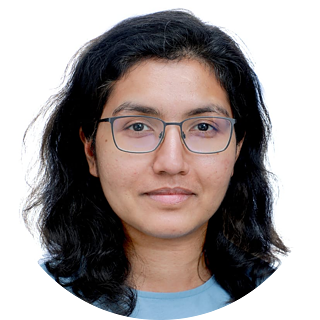
Translators Note:
Translating German literary texts - with cultural nuances that often reflect Central European realities - into a South Asian language like Malayalam is undoubtedly challenging in many ways. For someone like me, without an academic background in German literature or translation studies but simply a Malayali person living in Germany and engaging with the complexities and nuances of the German language in everyday scenarios, the months of engagement with the field of translation through this project has been interesting and refreshing.
During the exercises that were undertaken as part of this academy, it has been important for me to constantly acknowledge and deal with the fact that some cultural elements may not have a direct equivalent in Malayalam, and yet to try to convey the essence without compromising the integrity of the texts. The translation exercises have been attempts to not only bridge the gap between German and Malayalam, including the many differing and unique usages in the two languages. but also to understand both the languages closely and carefully, recognising that no translation can fully replicate the original. In the process, it is not only the German language that one explores but also one’s mother tongue, Malayalam in my case, paying attention to the nuances of the language which tend to be otherwise overlooked.
Translating an excerpt from Franz Kafka's "Die Verwandlung” (The Metamorphosis) from German into Malayalam posed several unique challenges, particularly in trying to preserve the distinctive style of Kafka's writing. It is in a sense an exploration of language, culture and the enduring relevance of his thought-provoking narrative in today’s world. Kafka is known for his intricate and surreal narratives, characterised by long sentences and a profound exploration of existential themes. The attempt to maintain the essence of Kafka's distinctive style, marked by extended and complex sentences, while ensuring coherence and readability in Malayalam has been a demanding task. The exploration of existential themes, including the very concept of metamorphosis, is central to "Die Verwandlung". Translating these philosophical underpinnings requires careful consideration to ensure that the ideas resonate in Malayalam while respecting the linguistic and cultural nuances of the target language.
In this translation, one hopes to offer Malayalam readers an experience that captures the essence of Kafka's literary brilliance at least to a small extent. The intention has been not merely linguistic transfer but a conveyance of the emotional and intellectual impact of Kafka's work within the cultural context of Malayalam speakers.
Marathi

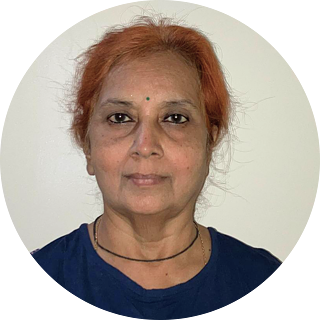


Translators Note:
Franz Kafka, one of the most important and influential literary figures of World Literature is known to Marathi readers, at least in part. Twenty years ago, I too got acquainted with Kafka as a student of German literature, but the relation with this author and his works never reached the threshold of friendship for various reasons. Now, after a gap of many years, at a more mature age and maybe with a little more understanding of the world, when I revisited Kafka for this DTA project, his writings unfolded in front of me in a new way, and his texts appealed to me anew as well. However, reading and appreciating Kafka in German is one thing, and translating his work into Marathi, is a different experience in itself.
I have translated two texts of Kafka, namely Der Fahrgast (On The Tram / The Passenger) and Der plötzliche Spaziergang (The Sudden Walk). Kafka’s short stories, rather the passages are true to the German saying “In der Kürze liegt die Würze” (Brevity is the soul of wit). While reading his short texts one can ‘feel’ the power of his words. Another remarkable feature of his writing is his style, precisely one that poses a challenge for the translator, particularly in Marathi.
The reading of the text Der Fahrgast is like looking at a photograph, which the narrator himself has taken during his travel. This photo has captured a moment in the outer world and in his inner world simultaneously. In the opening lines the narrator is asking fundamental questions of the meaning and purpose of his existence, depicting his state of mind. His ‘getting carried away’ by the tram indicates on the one hand his passivity, and on the other hand it connects him with his enquiries about life – he has no clue about where it is leading and why. On this contemplative background his eyes catch hold of a girl who is standing there, without taking cognisance of him, engrossed in her own world; he observes her minutely and stumbles upon the thought of whether she ever confronts existential questions like him. The surprised tone at the end, seemingly directed towards the girl, is, in my opinion, intended towards all the human beings in general. The title of the piece, literally translated into Marathi as Pravāsī is apt and in sync with the flow of narration, symbolising the journey of a person through life who is not participating actively in that life, but instead just passing through it like an observer. It also reminded me of a book-title in Marathi called Sāre Pravāsī Ghadīche by Jayawant Dalvi. This Marathi title suggests that all of us are travellers in this world, who exist here only momentarily.
The second prose piece Der plötzliche Spaziergang shows how a sudden realisation of something meaningful and worthy can change the direction of life of a person. This moment of ‘waking up’, by listening and following one’s inner voice, resulting in the realisation of one’s capabilities and subsequently one’s true nature - this is a process that can be well expressed with one Marathi term Sākṣātkāra. This term denotes the element of ‘Plötzlichkeit’, that is the sudden change in a state of mind, resulting in sudden action and leading to sudden realisation, and all this happening with lightning speed. Hence the title Sākṣātkāra in Marathi for Der plötzliche Spaziergang. The remarkable feature of this piece is its style. The German text of a length of a full page consists of only two sentences. Long sentences with multiple clauses is not a usual style in Marathi. However, in this translation I have retained the original German style, primarily because it brilliantly evokes the sense of shocking suddenness and quickness in changing thought and action.
Translating Kafka’s texts was truly demanding and afforded me the fascinating experience of experimenting and stretching the limits of my language. As a passionate reader, I have read quite a lot of Indian and World literature in translation, in my mother tongue Marathi. As a student of German language, I was aware of the challenges involved in the process of translation. But then the participation in the DTA project accelerated my journey from being a reader to being a translator with more vigor and confidence. During the course of the academy, we listened to various experts from the field of translation, interacted with them, read important texts about translation, had enriching discussions with mentors and fellow translators and got hands-on experience translating short pieces in the workshops. All of this gave me valuable insights into the act of translation and opened up for me the various possibilities of approaching a text. It gave me an impetus to consciously analyse the process of translation and critically evaluate my own translations.
I take this opportunity to thank Goethe-Institut for conceptualising this Digital Translation Academy in such a thoughtful and interactive manner. I am grateful for being a part of this project and look forward to working in such a creative field which is crucial for intercultural exchange.
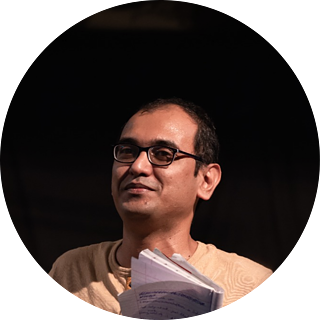
Translators Note:
No emotion other than a deep sense of gratitude expresses my year-long journey in the Diamantenschliff Digital Translation Academy (2023) organised by the Goethe-Institut Mumbai. It all began with the selection of the ‘diamonds in the rough’, including five candidates for the Marathi group based on the sample translations. The monthly guest lectures by esteemed translators followed by avid discussions have truly expanded my horizon. Intensive full-day workshops with the mentors for Marathi with hands-on experience on sample texts enriched my knowledge of literary translation. Furthermore, workshops with foreign experts focussing on specific aspects of translation like translating poetry built up my confidence.
It is often said that the journey is more important than the destination. In the case of translation, the journey is important, but so is the end-product. The Koh-i-noor in the Diamantenschliff, the cherry on the cake, was the opportunity to translate excerpts by Franz Kafka into Marathi. These translations culminating into Kafka’s 100th death anniversary celebration are an apt tribute to him. At the same time, it is an ideal test for the ‘young’ translators to display their brilliance and to show their mettle.
Kafka’s texts showcase the German language at its finest - characterised by complex sentence structures, like a peacock spreading its feathers in all its glory. This structure is not a coincidence, rather a tool chosen by Kafka to reflect the complexities of the modern world. Only long sentences with various clauses which need to be read and re-read can do justice in the target text. It is very challenging to reproduce this complexity as the usage of complex clauses is rather unusual in the Marathi language, and even when they are used, it is not in the manner as in the source text. This makes the task of the translator a tightrope walk. On the one hand, one wants Kafka’s predominant style to reflect in the translation; on the other hand, the very nature of Marathi evades such use. The multitude of clauses in the sentences in German provide information to the reader that is necessary for a deeper understanding. This can be compared to picking up flowers on the way and putting them into a ‘semantic basket’. In doing so, the reader goes back and forth dialectically. But as the translator makes smaller sentences and rearranges them for the sake of lucidity, the beauty of the back-and-forth is jeopardised; it is as if one is marching past the flower-bed. This, in my opinion, is the biggest challenge in translating the text. Even as the translator would like the reader to enjoy the process of picking the flowers, the reader should not feel lost in a forest.
The legal setting of Der Prozess, with its judges, police, attorneys, clerks and other people from the court, there prevails a sense of resignation. The generic Indian reader can very well identify with this in the context of his or her everyday reality. From the point of view of translation, though, the legal vocabulary in the text is a hard nut to crack. Kafka’s texts convey a range of emotions to the readers. There is a sense of being trapped. Every action of the protagonist - that follows long rumination and consideration of the situation from multiple perspectives - gets him stuck further in the rut, bringing a feeling of helplessness and eventually hopelessness. The system, rather than supporting and encouraging the protagonist, entangles him further in the anomalous situation. And needless to say, the design of the system, and not the protagonist, is to blame for this situation. With no clue how to escape this quicksand, he discusses at length how the system should be. In the face of all the apathy around him there isn’t even a shimmer of hope for the protagonist.
Linguistically speaking, and for the sake of brevity, I wish to cite two examples regarding the choice of words: Firstly, the same German word ruhig has been translated into Marathi in three different ways as per the context, the english equivalents being ‘having control on emotions’, ‘to do something calmly’ and as ‘silence’. Secondly, for the phrase Meine Herren (addressing the gentlemen) the Marathi equivalent chosen initially was लोकहो (people), which is gender neutral. However, even today, the courts are a predominantly ‘male territory’ in India, if not across the world. In Kafka’s original text, the protagonist addresses a male audience in the modern patriarchal world. So as an afterthought, I replaced लोकहो (people) with बांधवांनो (brothers) in order to retain the patriarchal undercurrent.
Lastly, I would like to summarise this enriching year-long journey with the analogy of air-travel: To an avid reader, which every translator must also be, the source text with its plethora of cultural references is a wonderland where one is amazed at every step of the way. But when it comes to translating the text, to travelling to this wonderland, one is only allowed a limited amount of check-in luggage. And that’s not an easy task. For if you leave too many possessions behind, they would be missed at the destination. And if you try to carry too many, you would have to pay dearly for the excess baggage. So, the translator must choose wisely, pack only what is necessary and learn to let go.
Sinhala

Translators Note:
Franz Kafka's "Das Urteil" (The Judgement) is a seminal text in the world of German literature and translating an excerpt from it into Sinhala was an enjoyable challenge for me because of its rich symbolism, psychological depth and complex narrative style.
While translating such a work, I had to consider many aspects. Sinhala, as a language, carries its own cultural references, idioms, and linguistic delicacies. Conveying Kafka's existential themes and the psychological depth of his characters requires a careful balance to ensure that the tone of his writing comes through to the Sinhala-speaking reader. Kafka's works contain images, metaphors and idiomatic expressions that may not have direct equivalents in Sinhala. The challenge lies in conveying these variations effectively without losing the essence of the original text. His unique narrative style, with its blend of realism and surrealism, demands skilled navigation from the translator’s side in order to retain and convey such stylistic elements. Preserving the text's atmosphere is crucial for an authentic reading experience in Sinhala, and this I found challenging.
Every translator brings their interpretation to the text. Balancing one’s loyalty to the original text while making the work understandable to Sinhala readers requires careful decisions about the choice of words, sentence structure and the overall flow. The translated work should aim to draw a similar emotional and intellectual response in the Sinhala reader as the original did for its audience. It involves not just a linguistic translation but also a transfer of the target impact on the reader. It is a careful process that requires not only linguistic expertise but also a deep understanding of Kafka’s themes and literary style.
Translating "Das Urteil" into Sinhala offered me an opportunity to introduce one of Kafka's most famous literary works to a new audience and to encourage a study of the cultural criss-crossing that is inherent within the text.
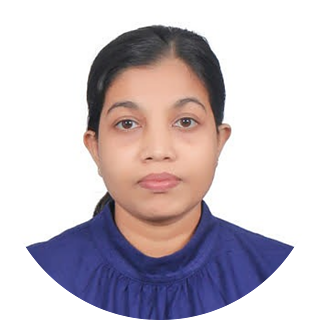

Tamil

Translators Note:
“Writers make national literature, while translators make universal literature.” (Jose Saramago)
Over the years - first as a student and then as a professor of German at the university level - I have had the opportunity to read the works of numerous great authors of German literature. During my undergraduate student days I also studied Tamil literature, while my doctoral thesis subsequently was on women’s literature from Austria. With a desire to contribute to making universal literature, as quoted by Saramago, I have been actively involved in translation to/from two Indian languages, namely Tamil and Hindi for the past 15 years.
As part of the Diamantenschliff Digital Translation Academy we had intensive workshops with different authors and translation experts who gave us insights into their works and into the different theories and techniques of translation. The highlight for me, as a Tamil translator, were the sessions with our mentor who shared many useful tips and techniques. This helped me gain new perspectives of translation, especially with regards to my target language. We had the choice of selecting different works of Franz Kafka and I found the excerpt from the novel “Das Schloss” (The Castle) quite intriguing. Lyrical, mysterious, and laden with symbolism, Kafka stimulates a variety of interpretations, metaphors and images. His stories are enigmatic worlds in which the individual is encumbered with existential anguish, guilt, isolation and anxiety, often engaged in a futile search for personal salvation. It is for this reason that translations of Kafka’s works are available not only in Indian languages like Hindi, Urdu, Bangla, Malayalam and Tamil but in more than forty languages worldwide, ranging from Icelandic to Japanese.
Kafka’s unfinished novel “Das Schloss” narrates the story of a land surveyor, identified simply by the initial K., who arrives at a village on work and tries to lead a decent life there. He is confronted with the bureaucracy of the castle authorities that permeates everything and everyone. All his efforts were thwarted by the mysterious power of castle authorities. Despite all his undertakings, K. remains a stranger and a trouble-maker for the castle authorities, fighting desperately for recognition.
As a translator into Tamil, there were challenges with lexical, metaphorical and culturally significant terms. Literature is often allowed the freedom to create a language of its own. The names of K., Westwest, Schwarzer are unique and have their respective significance within the story; finding equivalent terms in Tamizh was a challenge. I decided finally to leave the names as per the original story to maintain relevance, accuracy and context.
The opening paragraph starts with a flow, rhythm and simplicity, but soon gets overwhelmed by an array of metaphorical monstrosities when attempting to convey them in Tamil.
I would like to conclude that as a literary translator one may be faced with quite a few hurdles but also unique opportunities to find the perfect word or to come up with a clever alliteration to match the source text. The endeavour is certainly satisfying and rewarding.

Translators Note:
I started my journey as a translator as a student of the German language who was eager to explore and understand the language better. I worked as a freelance technical translator from German to Tamil and English for the past 10 years. However the real essence and beauty of any language is best showcased by its literature. So, I always dreamt of working on a literature project, and the Diamantenschliff Digital Translation Academy of the Goethe-Institut opened the door for this long-held wish.
I am grateful for the enriching sessions with our Tamil language mentor and for the workshops and lectures by various experts from the field of literature and translation. The workshop with our mentor was really enlightening, and it not only gave me new perspectives of how to approach literary translation (with best-practice examples) but also hone my skills as a translator through the guided exercises.
As a final part of the project came the translations of some of the literary works of Franz Kafka. I opted to translate into Tamil the short story “Die Verwandlung” (The Metamorphosis). The reason behind my choice is its apparent simplicity masking the depth in the flow of emotions as expressed by the author.
To paraphrase the words of our mentor, the translator has the responsibility as well as the freedom to translate a literary work from one language to another according to one’s own interpretation and sensibilities. But one must ensure that a “transcreation” has the same impact on the reader in the target language that is similar to the impact the original work had/has on its readers. I approached my translation with this theory in my mind. During the process, I encountered a rich array of words and synonyms in Tamil for every little detail conveyed by the author. I have tried to the best of my knowledge to choose the most suitable one in order to preserve the essence of Franz Kafka’s world, and to provide an authentic experience to Tamil readers. While handling the conversations, instead of literal translation, though it renders the correct meaning, I applied that “freedom” to choose an expression which renders not only the meaning but also the true sense and feeling of the character, one that readers can connect with on a deeper level.
While working on this project I realised that the speed and quality of my translation have improved dramatically, as has my confidence. I would like to express my sincere gratitude to Goethe-Institut, to our mentor and to my teammates for this wonderful opportunity to grow as a translator.
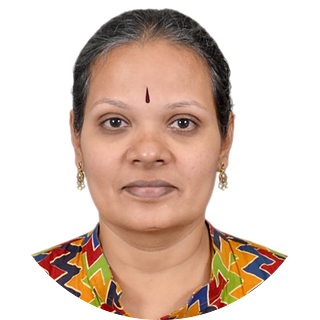
Urdu

Translators Note:
It is always an amazing and enriching experience to try out something new, especially in their professional field. I had a similar experience when I got the opportunity to translate a theatre play "Die Katze Eleonore" (Eleonore The Cat) by Caren Jeß. This play was very different from the other plays that I have read or translated so far. I had some experience in textual translation, but translating a theatre-play was a different ball game. Here I wish to share some of the challenges that I faced while doing this translation work.
I would like to start with the use of target language. Theatre translation is different from translating a prose piece, in that the play is performed by artists, and so the responsibility of translating the text in the target language is more so that people can connect to it instantaneously and easily as it is being performed. The utterances are not merely to convey the textual content but rather it is a conversation to express the feeling behind the situation portrayed.
Another challenge is the use of punctuation marks in this text. This text does not contain much punctuation, which makes it difficult as a translator to analyse where one sentence starts or where it ends. Then there is the situational background. The play depicts situations in the past and in the present. Much attention is required to convey what the play demands without altering its meaning. Moreover, in order to bring out the cultural connectivity in the target language Urdu without much modification from the original can also be a difficult task for the translator.
A further hurdle for me was the use of subject-specific terminology, for instance medical terminology (e.g. Benigner Proxymaler Lagerungsschwindel, Vertigo), for which there is often no equivalence in the Urdu language. Apart from these, I also found lexical difficulties in translating words like Erwerbsminderungsrente, Körperöffnungen, Buchfink, Bogangen, Vestibularorgane, glitzernder Frost etc.
To sum up, I can say that the structure of sentences, medical terminology, non-use of punctuation marks and the simultaneous use of past and present scenarios made the task of translator quite challenging.
In order to address and overcome such challenges, I did multiple readings, had discussions with my mentors and friends, made use of the internet and after that I carefully chose the best possible expression. The entire process broadened my horizon and enabled me to work with the text more inclusively and effectively. It also boosted my confidence by putting me in challenging situations through the writing methodology followed in this task.
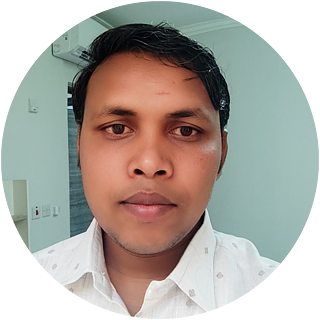
After completing his studies, he had the opportunity to practically apply his German language skills in various professional activities. In 2021 he took part in the project "Contemporary German-language drama in South Asian languages" organised by the Goethe-Institut India. In addition to Urdu and German, he also speaks fluent Hindi and English.
Translators Note:
I was fortunate to work with a group of translators proficient in different languages, and I had the opportunity to translate some text from the source language German into the target language Urdu. While translating the text called "Die Katze Eleonore", I encountered some difficulties in conveying the essence of the original text into the target language, but I endeavoured to steer the reader's mind through my translation. For example, I changed the name of the cat "Eleonore" to "Aaliya Noor" because Urdu readers are already familiar with such a common and attractive feminine name.
It was challenging, though, to translate certain medical terms and musical words into Urdu. Although equivalents could be found in the target language, I opted to retain the original terms or chose English words. For instance, i left the genre name "Musique D'ameublant" unchanged, and used the English equivalent of medical terms, so that readers may refer to them for better understanding.
While translating another text called "Black Facing," I also considered the reader's approach. This text primarily consists of bakery items. For instance, for specialised vocabulary like "Tête de Nègre" and "Maître", I could not find exact equivalents in Urdu, so I left them untranslated. Similarly, for words like "Mohr" and "Cognac," I used sentences to reveal the identity of the words to help readers easily understand them.
The exercise made me aware of the fine balancing act between the easily-adaptable to the untranslatable that the art of translation encapsulates.
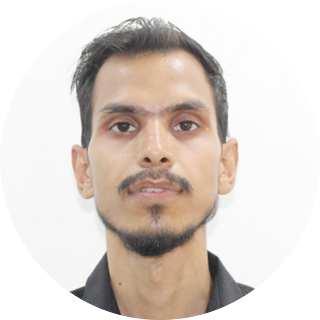
Translators Note:
While translating the "Die Katze Eleonore" from German into Urdu, I employed the approach of “foreignisation” to maintain the integrity of the source text's cultural and linguistic elements, even if they may seem unfamiliar or exotic to the target audience (Urdu readers). My aim was to preserve the foreignness and cultural nuances inherent in the original text while making it accessible to Urdu-speaking readers.
Throughout the translation process, efforts were made to retain the German cultural references, idiomatic expressions, and stylistic features that contribute to the richness of the original narrative. By maintaining these elements, the translated text seeks to immerse Urdu readers in the world and ambiance of the German story, allowing them to experience its uniqueness and authenticity. For example, in the source text there is a mention of a popular German beverage “Früchtetee” (fruity tea), which does not exist in Indian culture as such, and this was an example where the Urdu reader may get exposed to an aspect of the everyday cultural milieu of the Germany.
While some aspects of the source text may appear unfamiliar or challenging to Urdu readers, I believe embracing the foreignness can enhance their literary experience by encouraging cultural exploration and fostering a deeper understanding of both the original work and its cultural context.
Another important aspect while translating “Die Katze Eleonore" was the many medical terms used in the description of human psychology and behaviour. In the Urdu translation I have used English equivalents for such terms, as they are often untranslatable into Urdu.
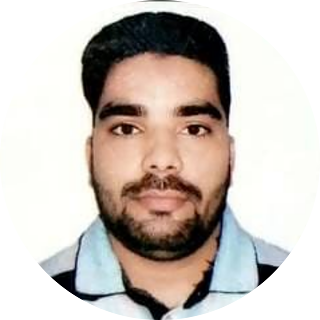
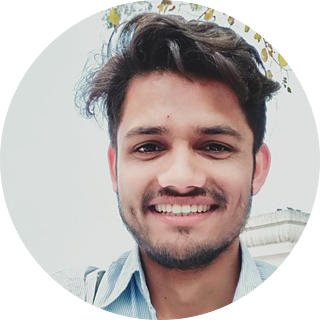
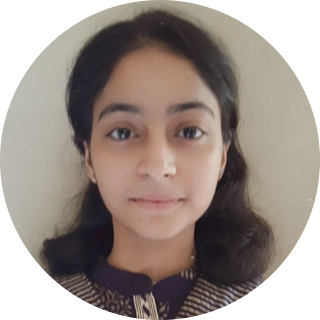
Translators Note:
“Das Schloss” (The Castle) is one of Franz Kafka’s three unfinished novels. At the beginning of the novel fragment, the protagonist K. arrives in a wintry village that belongs to the dominion of a castle. Asked if he had permission to stay, he explained that he was the appointed surveyor. He is allowed to stay, but only temporarily as a school servant. K.'s whole ambition is to get closer to the castle. But all efforts fail. The goings-on between the village and the castle and the subservient behavior of the villagers remain incomprehensible to him.
While translating the text into Urdu, the major issue that I faced was dealing with the arrangement of sentences. The German syntax varies so much from Urdu that such cascading sentences would sound meaningless and unpleasant in the target language. For example, “Vom Schlossberg war nichts zu sehn, Nebel und Finsternis umgaben ihn, auch nicht der schwächste Lichtschein deutete das große Schloss an” –if the exact syntax is to be followed in Urdu, it sounds broken, therefore I have made use of self-constructed punctuations and little paraphrasing for a linear grasp. Later, for the wordOfen (oven),I had three choices – tandoor (tandoor oven), angeethi (fireplace) and choolha (stove). I decided to use choolhato make it sound more Hindustani.
Another problem I faced was how to translate the untranslatable. For names likeWestwest, Schwarzer and Fritz, I have kept the names unchanged, whereas for certain words I have used the English equivalents in Urdu script (telephone, phone,surveyor, surveyorship) since these words are more easily understood by the target reader. For LandvermesserI have used the word “surveyor” at one place, while at other places I have used the paraphrased meaning in the form of the phrase “elaaqe ka jaayza karne wala”, “survey karne wala” and “zameen ka jaayza karne wala”,wherever the word appears later in the text. For Kastellan, Graf, Grafensohn I have used Urdu parallels like sadr and hukmraan. Many more similar examples can be cited for such decisions throughout the text, depending upon the appropriateness of the situation.
Sometimes the inherent sense of the word takes precedence, as in the expression sonderbar; I have usedhairat haiinstead of the more common ajeeb because, in my opinion, it was able to expressthe feeling of the text better.
It lies within the scope and the responsibility of the translator to take such decisions while translating a literary text, keeping in mind the receptive capability of the target audience and the impact of the chosen words.
